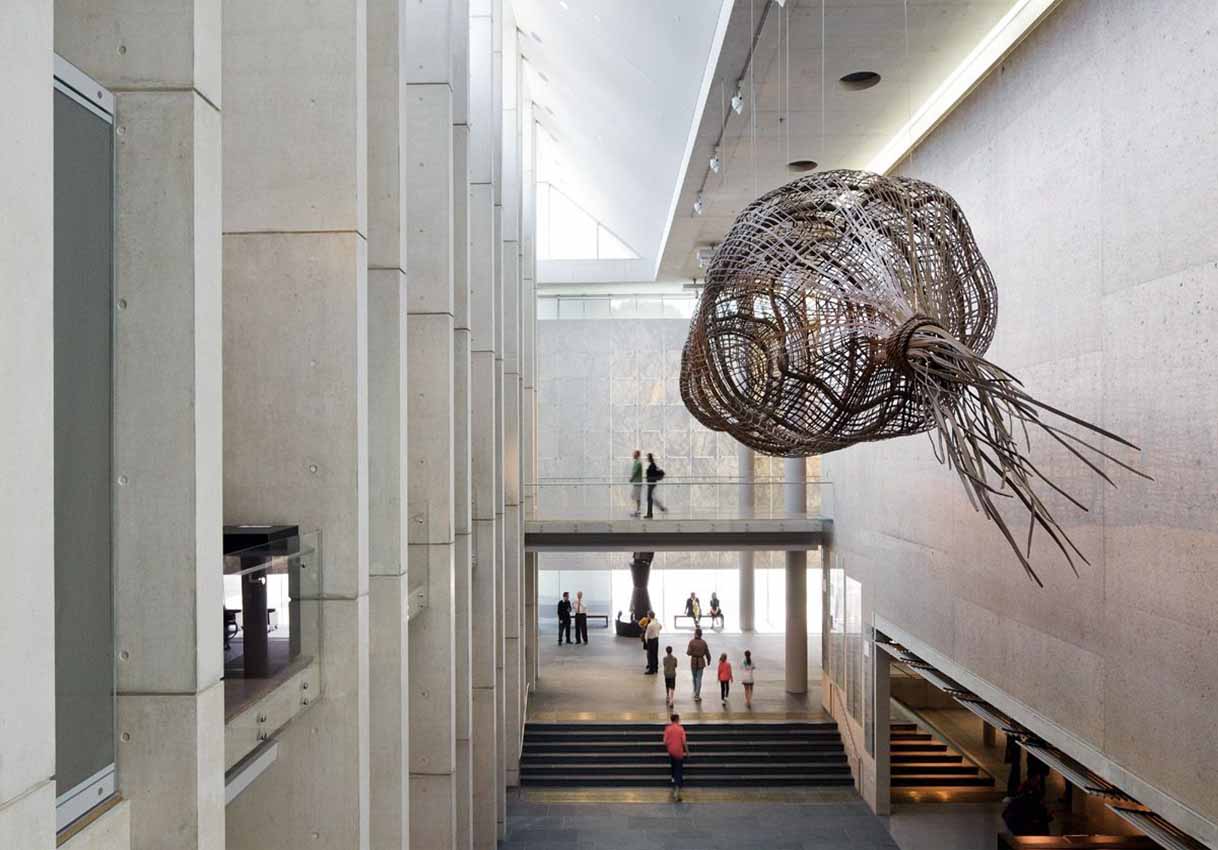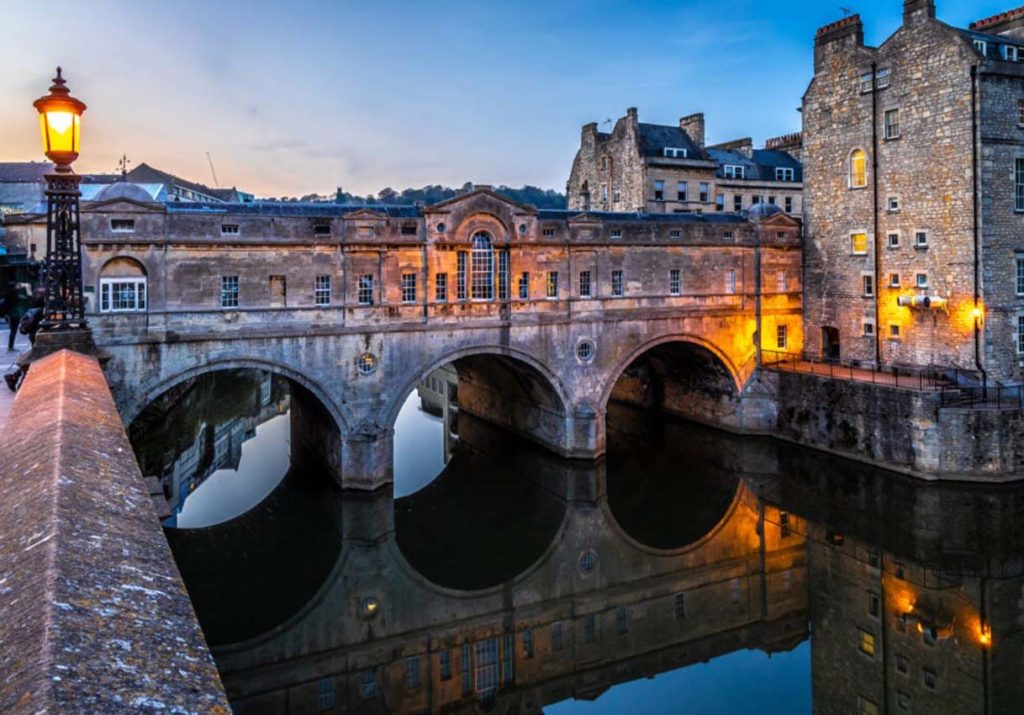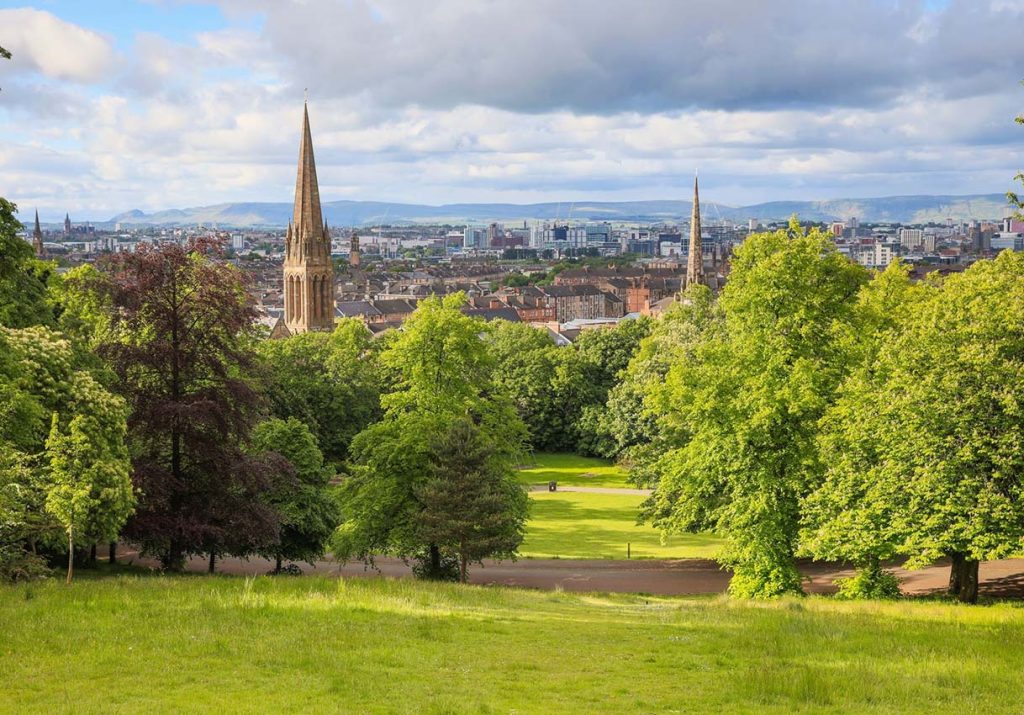Welcome to Canberra, Australia’s capital city, where culture and history converge in a blend of modernity and tradition. As a travel blogger passionate about uncovering unique destinations, I am excited to present to you a comprehensive guide to exploring Canberra’s rich tapestry of cultural and historical landmarks. From iconic museums to serene parks, Canberra offers a diverse array of experiences that cater to every traveler’s curiosity.
Introduction to Canberra
Nestled between Sydney and Melbourne, Canberra was purpose-built as the seat of Australia’s government. Designed by renowned architects, the cityscape itself reflects a meticulous urban planning ethos, with wide boulevards, green spaces, and striking architectural landmarks.
Cultural Highlights
1.National Gallery of Australia
Located in the heart of Canberra, the National Gallery of Australia stands as a beacon for art connoisseurs and curious visitors alike. Boasting a diverse and extensive collection, this iconic institution promises a journey through Australian and international art, spanning centuries of creativity and cultural expression.
Overview and History
Established in 1982, the National Gallery of Australia was envisioned as a showcase of the nation’s artistic heritage and a platform for global artistic exchange. Designed by the renowned architect Colin Madigan, the building itself is a masterpiece of modern architecture, blending harmoniously with the surrounding landscape.
Collections and Highlights
1. Australian Art Collection:
- Colonial to Contemporary: Start your exploration with the Australian art collection, which traces the development of art in Australia from colonial times to the present day. Highlights include works by renowned artists such as Sidney Nolan, Arthur Streeton, and Fred Williams.
- Indigenous Art: A cornerstone of the gallery’s collection is its representation of Aboriginal and Torres Strait Islander art. Discover traditional and contemporary artworks that reflect the rich cultural heritage and ongoing artistic traditions of Australia’s First Nations peoples.
2. International Art:
- European Masterpieces: Immerse yourself in the European art collection, featuring masterpieces from the Renaissance to the modern era. Marvel at works by Rembrandt, Monet, and Picasso, among others, that showcase the evolution of Western art.
- Asian Art: Explore the diverse cultures of Asia through the gallery’s Asian art collection, which includes exquisite pieces from China, Japan, India, and Southeast Asia. From ancient sculptures to contemporary installations, this collection offers insights into the artistic traditions of the region.
3. Contemporary Art:
- Cutting-edge Exhibitions: The National Gallery of Australia is at the forefront of contemporary art in Australia, regularly hosting exhibitions that challenge boundaries and provoke thought. From multimedia installations to avant-garde performances, these exhibitions highlight the dynamic nature of contemporary art practice.
Visitor Experience
1. Guided Tours and Talks:
- Enhance your visit with guided tours led by knowledgeable gallery educators who provide insights into the collections and exhibitions. Specialized talks and lectures offer deeper dives into specific artists or movements, enriching your understanding of the art on display.
2. Educational Programs:
- The gallery offers educational programs for visitors of all ages, including school groups, families, and lifelong learners. Interactive workshops, artist-led sessions, and educational resources are designed to foster creativity and engagement with art.
3. Facilities and Amenities:
- Enjoy the gallery’s modern facilities, including a café overlooking the sculpture garden and a well-stocked gift shop offering art-inspired souvenirs and publications. Accessibility features ensure that all visitors can enjoy a comfortable and inclusive experience.
Practical Information
1. Opening Hours and Admission:
- The National Gallery of Australia is open daily from [opening hours]. Admission fees may apply, with discounts available for seniors, students, and families. Check the gallery’s website for current ticket prices and special exhibitions.
2. Getting There:
- Located [address], the gallery is easily accessible by car, public transport, or bicycle. Parking facilities are available onsite, and public buses [bus routes] provide convenient access from Canberra’s city center.
3. Tips for Visitors:
- Plan your visit ahead by checking the gallery’s website for current exhibitions and events. Consider purchasing tickets in advance for popular exhibitions to avoid queues.
- Photography policies may vary for different exhibitions, so respect any restrictions on photography to preserve the artwork and respect copyright.
2.Australian War Memorial: Honoring Australia’s Military Legacy
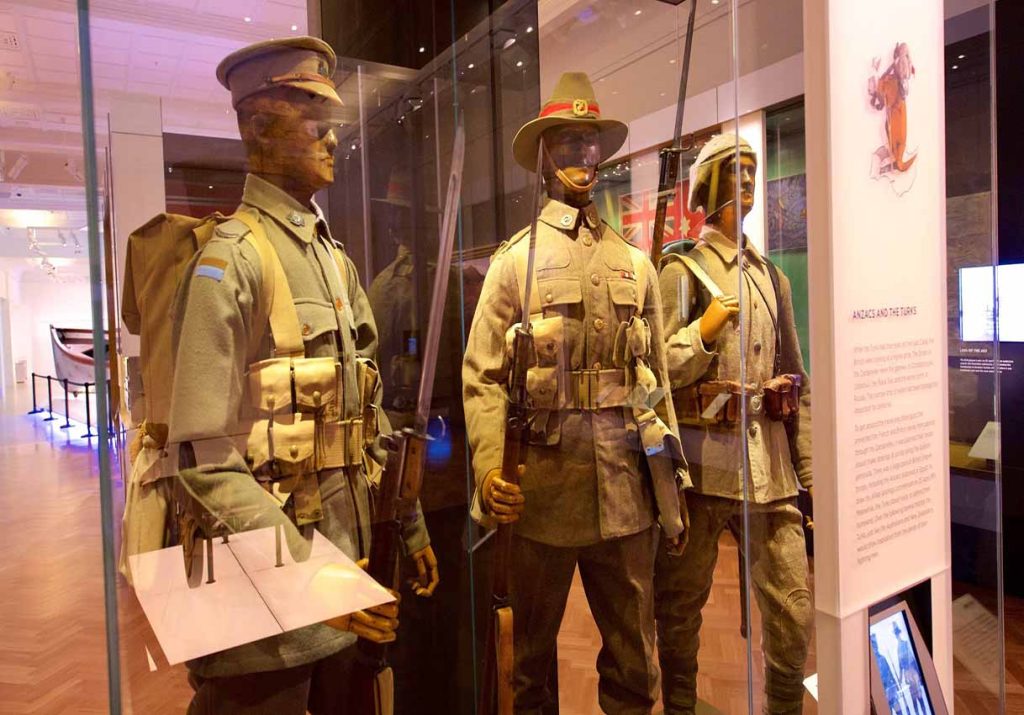
Nestled in the heart of Canberra, the Australian War Memorial stands as a solemn testament to Australia’s military history and the sacrifices made by its servicemen and women. This iconic institution seamlessly blends museum exhibits, a commemorative shrine, and extensive archival resources, offering visitors a profound and educational experience.
Overview and History
Established in 1941, the Australian War Memorial was conceived as a place of remembrance and reflection, dedicated to honoring those who served and died in wars, conflicts, and peacekeeping missions. Designed by architect Emil Sodersten, the memorial’s architecture evokes both strength and reverence, drawing visitors into its poignant narrative.
Museum Exhibits
1. Galleries and Displays:
- First World War Galleries: Begin your journey through the memorial’s galleries, starting with the First World War. Discover artifacts, personal stories, and multimedia presentations that vividly depict Australia’s involvement in the Great War, from Gallipoli to the Western Front.
- Second World War and Beyond: Explore subsequent galleries dedicated to Australia’s participation in the Second World War, as well as conflicts in Korea, Vietnam, and more recent peacekeeping missions. Interactive exhibits and immersive displays provide insights into the experiences of soldiers, nurses, and civilians affected by war.
2. Hall of Valour:
- Medals and Decorations: Pay homage to Australia’s bravest servicemen and women in the Hall of Valour, which showcases medals and decorations awarded for acts of gallantry and bravery. Learn about recipients’ extraordinary feats and the context in which their actions took place.
3. Commemorative Areas:
- The Commemorative Courtyard: Step into the Commemorative Courtyard, where the Pool of Reflection invites quiet contemplation amidst the names of Australia’s war dead. The Eternal Flame burns as a symbol of perpetual remembrance and gratitude.
- The Hall of Memory: Ascend to the Hall of Memory, a place of solemnity and reverence housing the Tomb of the Unknown Australian Soldier. This sacred space invites visitors to reflect on the cost of war and the enduring legacy of sacrifice.
Educational and Visitor Experience
1. Guided Tours and Talks:
- Enhance your visit with guided tours led by knowledgeable volunteers or participate in scheduled talks and lectures that delve deeper into specific aspects of Australia’s military history. These experiences provide context and personal stories that enrich understanding.
2. Commemorative Events:
- Attend commemorative events and ceremonies held throughout the year, such as Anzac Day and Remembrance Day, which honor the service and sacrifice of Australian veterans. These events offer opportunities to connect with history and pay respects alongside the broader community.
3. Research Facilities:
- Access the memorial’s extensive research facilities, including archives, libraries, and online resources, which support scholarly inquiry and personal research into military history, genealogy, and wartime experiences.
Practical Information
1. Opening Hours and Admission:
- The Australian War Memorial is open daily from [opening hours]. Admission is free, with donations appreciated to support ongoing preservation efforts and educational programs. Special exhibitions may have additional fees.
2. Getting There:
- Located [address], the memorial is easily accessible by car, public transport, or bicycle. Onsite parking is available, and public buses [bus routes] provide convenient access from Canberra’s city center.
3. Tips for Visitors:
- Plan your visit by checking the memorial’s website for current exhibitions, guided tour schedules, and any temporary closures or special events.
- Respect the solemn atmosphere of commemorative areas and follow photography guidelines to preserve the dignity of the memorial and honor those commemorated.
3.National Museum of Australia
Located in Canberra, the National Museum of Australia offers a captivating journey through the nation’s social, cultural, and environmental history. With interactive exhibits, immersive displays, and a diverse collection of artifacts, the museum invites visitors to uncover the rich tapestry of Australia’s past and present.
Overview and Mission
Established in 2001, the National Museum of Australia was designed by architect Howard Raggatt to reflect the Australian landscape and the stories embedded within it. The museum’s mission is to explore the land, nation, and people of Australia through engaging exhibitions and programs that celebrate diversity and foster understanding.
Exhibitions and Collections
1. First Australians Gallery:
- Indigenous Perspectives: Begin your exploration with the First Australians Gallery, which honors the cultural heritage and resilience of Australia’s Aboriginal and Torres Strait Islander peoples. Discover ancient artifacts, contemporary artworks, and personal stories that illuminate the ongoing contributions of Indigenous Australians to the nation’s identity.
2. Landmarks Gallery:
- European Settlement: Trace the impact of European settlement on Australia’s landscape and society in the Landmarks Gallery. Through interactive displays and multimedia presentations, gain insights into pivotal moments in Australian history, from early exploration to the establishment of colonies and the shaping of modern Australia.
3. Eternity Gallery:
- Cultural Diversity: Explore the Eternity Gallery, where exhibits highlight Australia’s cultural diversity and immigration history. From stories of migration and multicultural communities to the celebration of cultural festivals and traditions, this gallery showcases the evolving identities that define contemporary Australia.
4. Iconic Exhibits:
- Phar Lap: Marvel at iconic exhibits like Phar Lap, the legendary racehorse whose story symbolizes Australia’s passion for sport and resilience. The display includes artifacts and multimedia presentations that bring Phar Lap’s racing career and enduring legacy to life.
- Eternity Puzzle: Engage with the Eternity Puzzle, a contemporary artifact that captivated the nation with its intricate design and mysterious origins. Learn about its creator and the global fascination it sparked upon its discovery.
Visitor Experience
1. Interactive Learning:
- Hands-on Activities: Enjoy interactive learning experiences throughout the museum, including touchscreens, multimedia displays, and interactive simulations that appeal to visitors of all ages. These activities encourage exploration and deeper engagement with the museum’s themes.
2. Programs and Events:
- Educational Programs: Participate in educational programs tailored for schools, families, and lifelong learners, which complement the museum’s exhibitions and promote curiosity about Australia’s history and cultural heritage.
- Special Events: Attend special events, lectures, and workshops hosted by the museum, which offer opportunities to delve deeper into specific topics and connect with experts and community members.
3. Facilities and Amenities:
- Café and Gift Shop: Take a break at the museum’s café, which offers refreshments and panoramic views of Lake Burley Griffin. Browse the gift shop for unique souvenirs, books, and artwork inspired by Australian history and culture.
Practical Information
1. Opening Hours and Admission:
- The National Museum of Australia is open daily from [opening hours]. Admission fees may apply, with discounts available for seniors, students, and families. Check the museum’s website for current ticket prices and special exhibitions.
2. Getting There:
- Located [address], the museum is conveniently accessible by car, public transport, or bicycle. Onsite parking is available, and public buses [bus routes] provide easy access from Canberra’s city center.
3. Tips for Visitors:
- Plan your visit by reviewing the museum’s website for exhibition schedules, guided tour options, and any temporary closures or special events.
- Explore at your own pace and take time to interact with exhibits that resonate with your interests. Consider joining a guided tour for a deeper understanding of specific galleries and artifacts.
Historical Landmarks
1. Old Parliament House
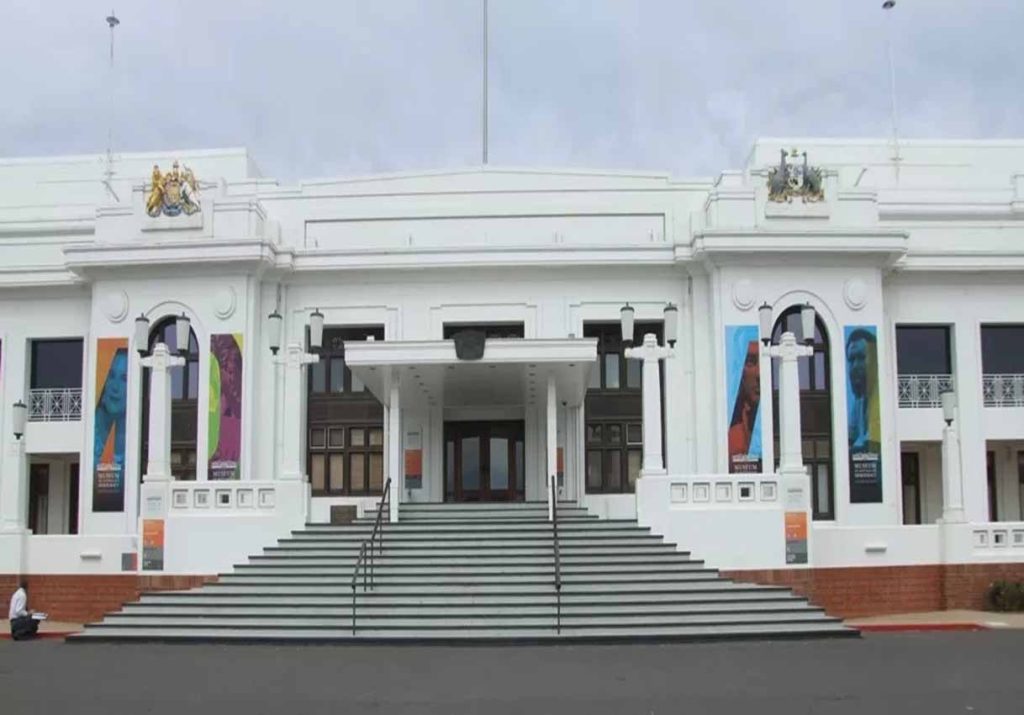
Step back in time at Old Parliament House, which served as Australia’s seat of government from 1927 to 1988. Explore the chambers where historic decisions were made, and gain insights into the country’s political evolution through engaging exhibitions.
2. National Archives of Australia
For those fascinated by archival treasures, the National Archives of Australia offers a glimpse into the nation’s documentary heritage. Discover original documents, photographs, and records that illuminate Australia’s development as a nation.
3. Mount Ainslie Lookout
For panoramic views and a touch of natural history, ascend Mount Ainslie to witness breathtaking vistas of Canberra’s layout. This vantage point provides a perfect backdrop to understand Canberra’s unique design and the significance of its geographic location.
Practical Tips for Visitors
- Getting Around: Canberra’s efficient public transport system and bike-friendly infrastructure make it easy to navigate.
- Weather Considerations: Canberra experiences four distinct seasons, with mild summers and chilly winters. Plan your visit accordingly to enjoy seasonal events and outdoor activities.
- Culinary Delights: Explore Canberra’s vibrant food scene, which boasts a range of dining options from casual cafes to fine dining restaurants, showcasing local produce and international cuisines.
Canberra invites travelers to immerse themselves in a wealth of cultural and historical experiences. Whether you’re exploring world-class museums, reflecting at solemn memorials, or simply enjoying the city’s scenic beauty, Canberra offers a journey through Australia’s past, present, and future.
In conclusion, as you plan your visit to Canberra, let this guide serve as your roadmap to uncovering the city’s cultural and historical treasures. From art aficionados to history buffs, Canberra promises an enriching experience that celebrates Australia’s diverse heritage. Happy exploring!
Remember, the heart of Canberra beats with stories waiting to be discovered—don’t miss your chance to be a part of its narrative.
